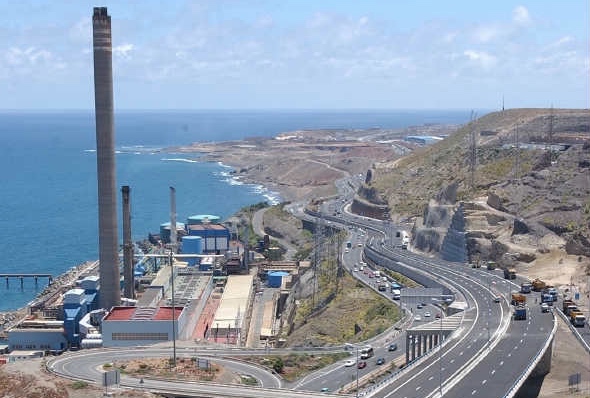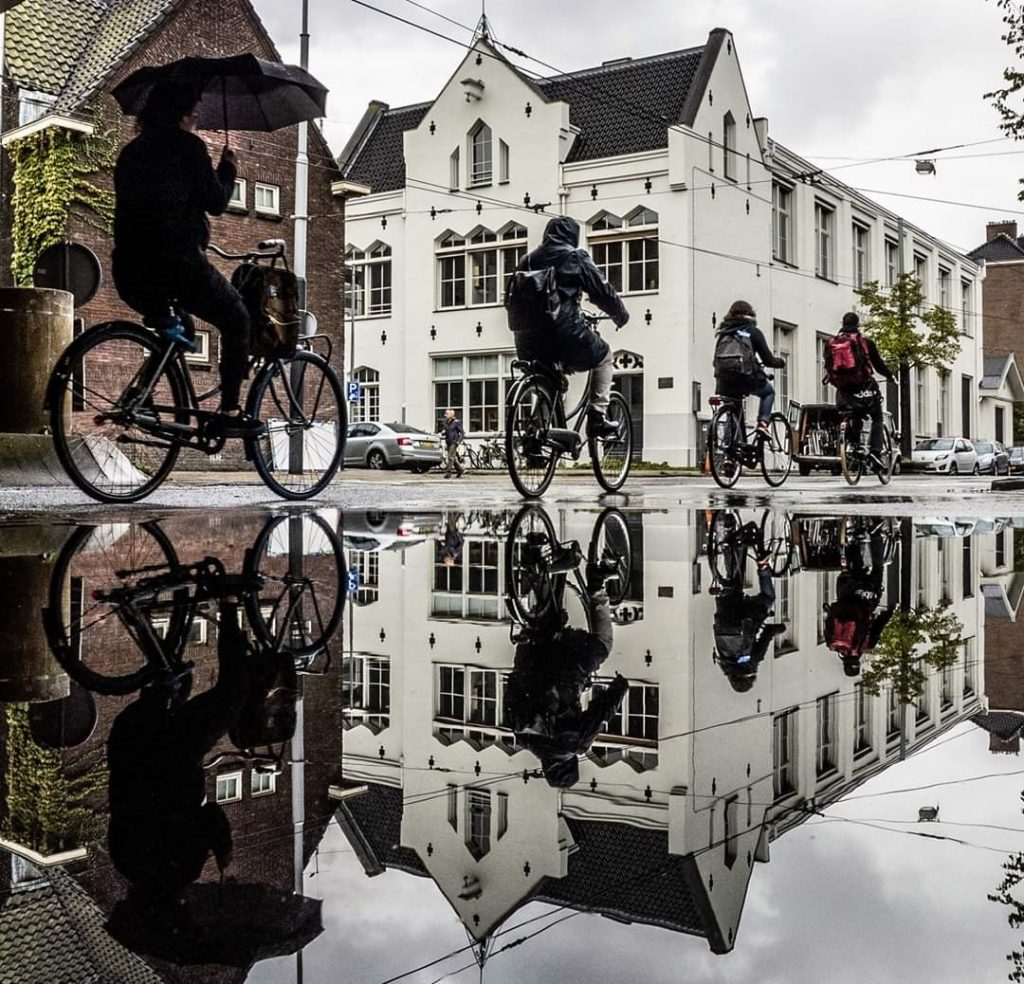
Desaladora en Gran Canaria
Nuestro vecino y amigo Rudi Baumans en Bungalow Campo de Golf me preguntó por qué en Canarias no hay problema de agua potable. Me decía que los años que no llueve en Bélgica tienen muchos problemas con el abastecimiento de agua, y que en Canarias llueve muy poco y siempre hay agua en las casas.
Rudi es un ejemplo de superación para todos los que amamos la vida y la queremos vivir momento a momento. Desde siempre ha usado la bicicleta para sus desplazamientos y la ha convertido en uno de sus hobbys principales, y los meses que pasa en su bungalow en Maspalomas hace recorridos de ochenta kilómetros, llegando a Mogán, subiendo a San Bartolomé y regresando a Campo de Golf. El año pasado sufrió un accidente importante en Bélgica y estuvo muchos meses para recuperarse con mucho riesgo de que quedaran secuelas importantes. Pero con gran esfuerzo, con ilusión y con un ejemplo de superación de las dificultades está de nuevo este año haciendo su recorrido hasta las cumbres de Gran Canaria.
Ya hablé de Rudi hace unos meses en nuestro grupo y de nuevo lo hago, con mucho cariño, para contestarle a su pregunta sobre el agua en Canarias.
En la década de los sesenta todo el agua que se consumía en Canarias provenía de las reservas subterráneas o de los manantiales. La presión demográfica ha ido en aumento, pero evidentemente no las lluvias. Las islas más secas, como Fuerteventura y Lanzarote, eran abastecidas con cubas que transportaban los buques de la Armada, y los cortes de abastecimiento en Gran Canaria y en Tenerife eran frecuentes. Para resolver este problema importantísimo para la sociedad y para la economía de las islas se comenzaron a instalar plantas desaladoras que hacen potable el agua de mar. La primera planta desaladora se construyó en Lanzarote en 1964, como respuesta a la alarmante escasez de agua.
La estación de tratamiento de agua potable es una estructura en las que se trata el agua para que sea apta para el consumo humano, captando el agua de mar y desalinizándola. El proceso termina pro producir agua de acuerdo a las normativas de calidad para que pueda ser distribuida en la red de abasto. En Canarias hay actualmente 330 desaladoras en funcionamiento (potabilizadora es el término popular) que se concentran en Gran Canaria, Tenerife, Lanzarote y Fuerteventura. 291 de ellas usan la tecnología de ósmosis inversa. La ósmosis es un fenómeno físico relacionado con el pasaje de un disolvente entre dos disoluciones de diferente concentración separadas por una membrana semipermeable (que permite el paso de disolventes, pero no de solutos).
Los retos de futuro pasan porque Canarias siga siendo pionera en tecnología, reduciendo consumos energéticos y aplicando energías renovables. Fuerteventura tiene un proyecto en marcha para generar el 100% del consumo energético de la planta desaladora de Corralejo con un parque eólico.
WATER IN THE CANARY ISLANDS
Our neighbor and friend Rudi Baumans at Bungalow Campo de Golf asked me why there is no drinking water problem in the Canary Islands. He told me that in the years that it does not rain in Belgium they have many problems with the water supply, and that in the Canary Islands it rains very little and there is always water in the houses.
Rudi is an example of improvement for all of us who love life and want to live it moment by moment. He has always used the bicycle for his trips and has made it one of his main hobbies, and the months he spends in his bungalow in Maspalomas travels eighty kilometers, arriving in Mogán, going up to San Bartolomé and returning to the Golf Course . Last year, he suffered a major accident in Belgium and spent many months recovering at high risk of significant aftermath. But with great effort, with enthusiasm and with an example of overcoming difficulties, he is again this year making his way to the summits of Gran Canaria.
I already spoke about Rudi a few months ago in our group and again I do it, with much affection, to answer your question about water in the Canary Islands.
In the 1960s, all the water consumed in the Canary Islands came from underground reserves or springs. Demographic pressure has been increasing, but obviously not the rains. The drier islands, such as Fuerteventura and Lanzarote, were supplied with tanks that transported Navy ships, and supply cuts in Gran Canaria and Tenerife were frequent. To solve this very important problem for society and for the islands’ economy, desalination plants began to be installed that make seawater drinkable. The first desalination plant was built in Lanzarote in 1964, in response to the alarming water shortage.
The drinking water treatment station is a structure in which the water is treated to make it suitable for human consumption, capturing seawater and desalinating it. The process ends by producing water according to quality regulations so that it can be distributed in the supply network. In the Canary Islands there are currently 330 desalination plants in operation (water treatment plant is the popular term) that are concentrated in Gran Canaria, Tenerife, Lanzarote and Fuerteventura. 291 of them use reverse osmosis technology. Osmosis is a physical phenomenon related to the passage of a solvent between two solutions of different concentration separated by a semipermeable membrane (which allows the passage of solvents, but not solutes). The future challenges are for the Canary Islands to continue being a pioneer in technology, reducing energy consumption and applying renewable energy. Fuerteventura has a project underway to generate 100% of the energy consumption of the Corralejo desalination plant with a wind farm.
FOTOS APORTADAS POR VEERLE DE VLESSCHAUWER

ISLA EN EL NORTE, Paises Bajos

VICTORY, SCHIERMOONIKOOG, Paises Bajos

PLANCIUSSTRAAT, AMSTERDAN
